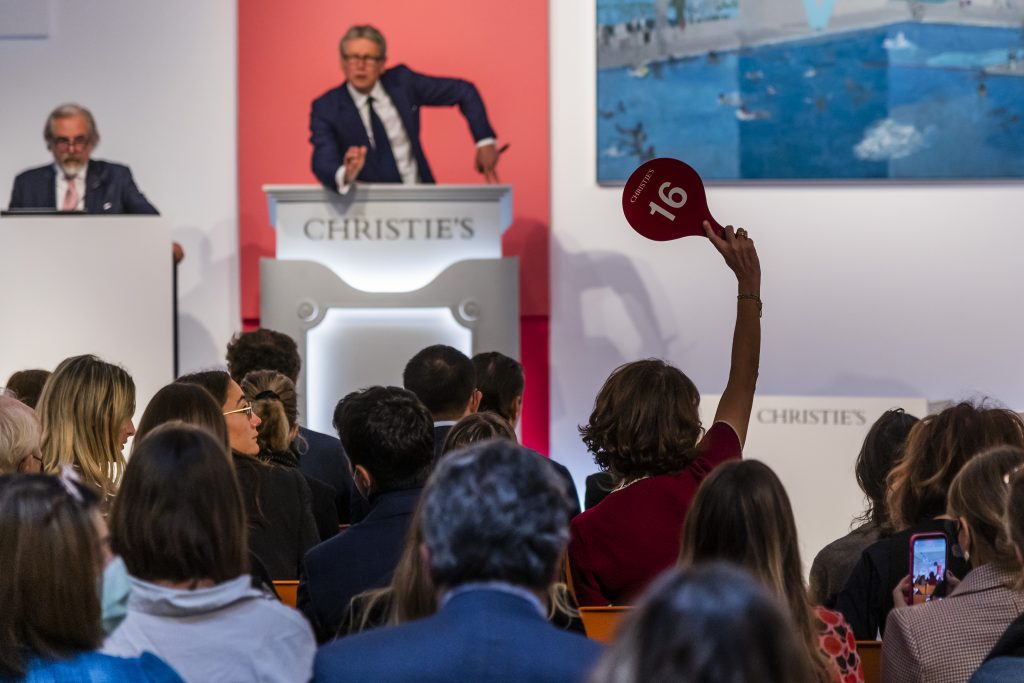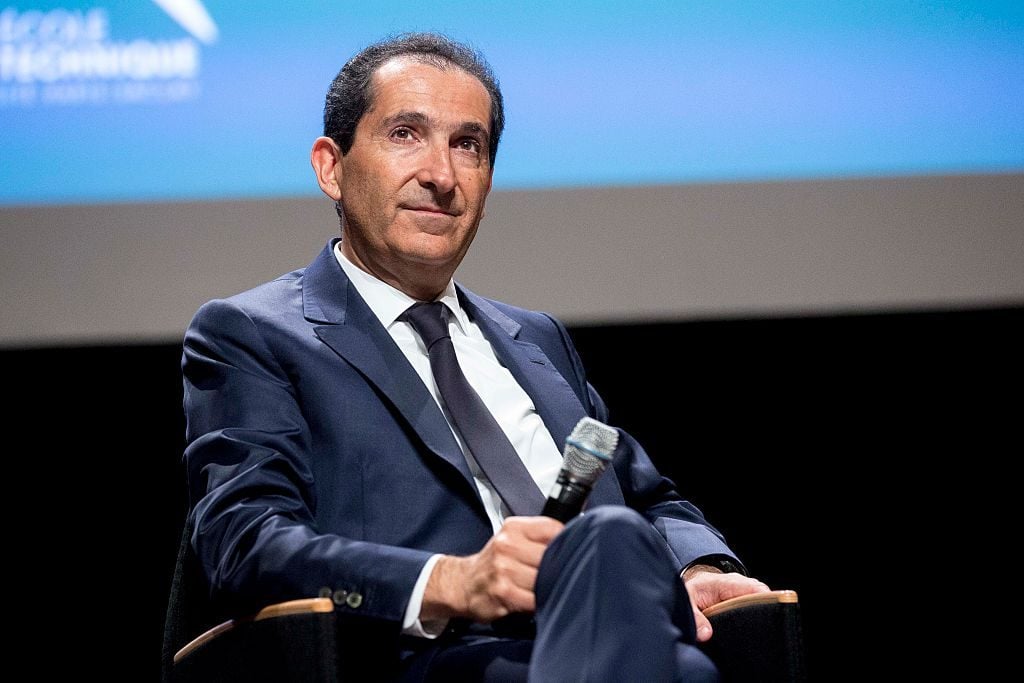Market
Artnet News Pro Is Celebrating Its First Birthday. Here Are Our 15 Favorite Agenda-Setting Stories From Year One
Celebrate with us by joining our Pro community with a special $1 introductory offer for new members.

Celebrate with us by joining our Pro community with a special $1 introductory offer for new members.

Artnet News

Last year, we made the bet that if we invested in analyst-caliber coverage of the art market, our most dedicated readers would invest in us. We’re glad to say the bet paid off.
This month, we are celebrating the one-year anniversary of Artnet News Pro, our members-only new service designed to provide you with the tools you need to navigate the high-stakes terrain of the art market.
Since our launch, thousands of the art world’s most passionate denizens—from leading dealers to world-renowned artists to upstart strivers to titans of industry—have joined our community to get everything from a rundown of the biggest consignors at auction, to an inside look at the Gen Z buyers upending the market. (We also throw in a fair amount of practical insight about art shipping, insurance, and legal developments—we want to make your job easier!)
Our goal is to offer the kind of inside-baseball information that, without your support, would be impractical for a site like ours to produce at scale. Think of it this way: for just one article, a Pro reporter might meet with half a dozen sources, interview a dozen people, and work with our Business Intelligence Team to analyze more than a decade’s worth of auction-sales data.
If you haven’t yet taken the plunge, allow us to whet your appetite. Below, we’ve pulled together a selection of our team’s favorite Pro stories from our first year. If you like what you see but haven’t subscribed yet, there’s never been a better time: To celebrate our first birthday, we’re making it easier than ever for new subscribers to join the party by offering them a special $1 introductory price for their first month. Sign up here.
We hope you’ll join us.

The Grand Canal and the Accademia bridge in Venice, Italy. Photo by Simone Padovani/Awakening/Getty Images.
“As much as galleries might like to pretend that the important institutional event is not a market moment, let’s not forget that the Venice Biennale was originally designed as a commercial event, and to this day committed collectors often use biennials as a hunting ground for their next acquisitions. For the biggest biennial of them all, anyone who’s anyone in the collecting world will be there, and galleries will be conducting deals both of what is on view in Venice and elsewhere.”
“Think of it as El Dorado. Everyone wants to get rich—fast. And the entry point is relatively inexpensive. ‘It’s like buying a ticket to a movie,’ said Alberto Mugrabi, a scion of a major art-collecting and trading family. ‘It’s an investment to go dream.’ But do these small-scale investors actually stand to make real money? And is the traditional art market prepared for a future in which masterpieces are divided into shares and traded like stocks and bonds?”
“The five laws clarified by the data may be able to help crypto artists improve their results on the platform. But they also lend support to the notion that the NFT market sometimes behaves much more like the legacy art market than many blockchain revolutionaries would like to believe.”
“Yuga Labs wants Bored Apes to offer real-world utility, of some sort. Since the Bored Ape Yacht Club launched in April 2021, that utility has evolved into free money, parties, and, with its latest acquisition, the potential for an expanded NFT universe. Real utility has been a raison d’être for tokens since the initial coin offering era of 2017. Over the past year, as NFTs have exploded in popularity, their creators have had to come up with their own vision for exactly how these assets could enrich the lives (and bank accounts) of their owners.”
“In the face of increasing regulations aimed at neutralizing the country’s skyrocketing real estate market, many wealthy Koreans are turning to other means of diversifying their investment portfolios, including contemporary art. Driving this surge in the domestic art market is a burgeoning class of collectors eager to flex their financial wherewithal while also increasing their cultural capital. We shine a light on some of the most prominent young collectors in Seoul’s booming art scene.”

Who stands to gain most from hiding their identity online? (Photo by Chesnot/Getty Images)
“The riskiest part of an online transaction, according to experts, is collecting identity documents or other sensitive information via email. ‘There are many, many examples of email systems being compromised, leading to payments being sent to an account run by fraudsters,’ King noted. As an alternative to email, consider using WeTransfer; password-encrypted files can and should be sent separately via WhatsApp, Teams, or another secure platform.”
“Bacon’s Triptych (1986–7), which is scheduled to be sold with an estimate of £35 million to £55 million ($47.3 million to $74.3 million) on March 1 in the first of a series of high-stakes 20th- and 21st-century art auctions, is being sold by star architect Norman Foster, according to people familiar with the work.”
“As usual, this year’s results reflect a finely tuned mix of supply and demand. Sometimes, all it takes to transform an artist’s fortunes is for one important collector’s estate to sell a single major work. In other cases, the market is simply willing to absorb considerably more material by an artist at higher prices than it had been in the past. In the first 11 months of 2019, 584 works by Banksy sold for a total of $27.5 million. In the equivalent period of 2021, 934 works generated considerably more: $201.4 million.”
“Artnet News surveyed more than 300 gallerists about the economics of their operations: details on their salary ranges, responsibilities, demographics, and personal stories. What emerged from this data, collected via an anonymous survey from professionals in 28 countries, was a portrait of an industry still struggling to define what equality means in a year that has seen both a pandemic slowdown and a market roaring back to life.”
“Over the course of his decorated career, Picabia—who was born wealthy and gained a reputation as a jokester and a playboy—hopped from Impressionism to Cubism to Dadaism, even dabbling at one point in Renaissance-style painting. His heterogenous approach earned him admirers in his own time and beyond, but has hampered his appeal in the art market, which prefers clear brands and easy definitions.”

Sotheby’s owner Patrick Drahi in 2016. (Photo by Christophe Morin/IP3/Getty Images)
“Under CEO [Charles] Stewart, most of the existing C-suite was gone before lockdowns even went into effect. The remaining senior executives were offered salary cuts in exchange for equity down the line, a common practice at tech start-ups, according to people familiar with the talks. New hires and investments spearheaded by Stewart were laser focused on technology (live-streaming, a new mobile app, NFT infrastructure).”
“High inflation is on people’s minds again. The Consumer Price Index, a key inflation metric, jumped 7.5 percent in January from a year ago, the biggest increase in 40 years. The Federal Reserve is contemplating an interest rate hike. Prices for cars, fuel, and orange juice are up amid pandemic-related supply-chain disruptions and consumers’ pent-up demand. What does all this mean for the art market? I spoke with advisors, economists, and business owners to get their read on the situation. The takeaway: art is perceived as a strong hedge against inflation. But whether it actually is? The jury is still out.”
“Model and writer Emily Ratajkowski made headlines this spring when she jumped onto the NFT bandwagon and sold a work through Christie’s as a way to buy back her image. In her announcement for the auction back in April, Ratajkowski framed the sale of the NFT—which is a picture of her in front of a Richard Prince work that reproduces one of her Instagram posts (whoa, there’s a lot going on there!)—as an attempt to take control of her likeness not only from Prince, but from all male artists who (lazily) use women as their inspiration.
As it turns out, that’s not the full story. Why? Because what Ratajkowski did not say, and which Wet Paint can exclusively reveal, is that she actually commissioned the Prince portrait in 2015.”
“They are young. They are rich. They pair Audemars Piguet watches with Vans sneakers. And they are buying art—a lot of it. A new generation of Asian collectors not only salvaged auction sales from a potentially disastrous decline amid the economic downturn, but also has the potential to disrupt the hierarchy of tastemaking in a global art market that has long been dominated by the West.”
“My top three choices to have my portrait done by a living artist would be: David Hockney, Elizabeth Peyton, and Richard Prince. I loved the exhibition of 82 portraits done by Hockney at the Royal Academy in London in 2016. Elizabeth Peyton’s oeuvre consists mostly of gorgeous portraits done of celebrities past and present. Richard Prince’s Instagram portraits would probably be the closest equivalent today to the society portraits Warhol was doing in the 1970s and ‘80s. When you check #selfie on Instagram you see it has been used at least 450 million times. The ultimate ego trip therefore has got to be to have your IG portrait done by Richard Prince.”